Notes
Katrina Anniversary: The Art Of Misery
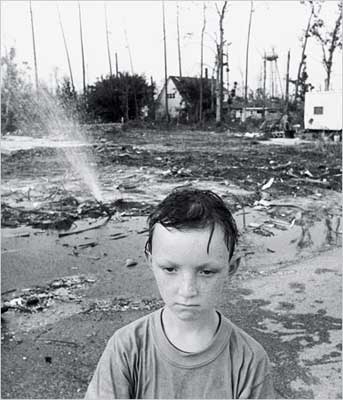
In the summer issue of Aperture, Fred Ritchen (the director of Pixel Press and the Transmedia Center at Temple University) reviewed The Body At Risk (link), a photography exhibition dealing with “the vulnerability of the human condition” over the past hundred years.
Ritchen described the show as “concerned photography,” which he elaborated as:
“the notion that a compassionate, empathic approach to human suffering, with the photographer serving as eyewitness, is able to provoke society to do something about the problems revealed.”
In that context, Ritchen cautions that such exhibitions mostly offer a “self comforting delusion” because their display causes little to happen. Perhaps his critique is aimed mostly at photos in galleries or museums. Alluding to the effectiveness of social images in publications such as LIFE Magazine, however, I assume Ritchen’s point also extends to the news press.
As dedicated as I am to political imagery, I hope the stream of Katrina-inspired photo-documentation is having some tangible impact on the reconstruction of the Gulf. However, I’m under no illusion about this week’s anniversary visuals. With summer at its exhaustion point, its hard not to see the “concerned” pictorial coverage as feeding the commercial interests of the media, as well as various political aims.
As a case in point, I was put off by the heavy-handed images in this week’s NY Times Magazine lead story, “Children of the Storm.” (That’s the cover shot above. The on-line edition offers this dedicated interactive feature.)
In the piece, we have image after black-and-white image of children in what often feel like tightly-scripted and self-conscious expressions of misery. In the shot above, for example, we find a boy who is somehow wet posing disconsolately in front of the camera nearby an open hose. The decrepit surroundings suggest the ground — fed by that notorious Gulf water — might even be contaminated.
Here are a some others that seemed to preach more than inform.
In this image, we have a small girl with a slight prosecutorial hitch in her right shoulder (in synchrony with Mom’s). As the mother’s alter ego (or the photographer’s?), how much insight can be derived from an enlisted child (unless that’s the real subject here.) Given the various agendas (Mom’s, the photographer’s, the magazine’s), how is one to respond to what comes off like display? In other words, how can we tell how much the child’s suspicion has to do with the mother’s social grievances, the child’s everyday response to her lot, or the fact some (I’m assuming, white) strangers have just invaded for an anniversary?
And then there’s this.
If the girl wasn’t prompted to sit on the cooler, and the lonely facing bench wasn’t placed in the corner, and the items on the floor weren’t arrayed like that (which they very well might not have been), then my apologies. Offered up as a news photograph (as opposed to an “art photograph”), however, I find the composition problematic just for the evocation of contrivance.
More troubling, however, is the long angle. With the cavernous effect, the image functions more like a public service announcement. In a stretch of time where the conscious (visual) news consumer — bombarded by misery — has been forced to develop much finer instincts regarding what feels genuine, the exaggeration here seems counterproductive. (On my first pass, the pic had a “Katrina meets Gitmo” feel to it.)
At the outset of the interactive feature, the photographer cites a discussion with the NYT Mag photo editor. With so many thousands of children dispossessed by Katrina, the editor asks, “how come I haven’t seen any of them?” It’s a good and noble question which motivated a commendable assignment. In many of the resulting images, however, perhaps too much effort went into making up the difference all at once.
According to Ritchen, a good part of the problem with “concerned photography” is that the images lack the “compelling synergies of newer media,” the “political strategies,” and the “pragmatic responses to the imagery” that might actually elicit a truly social response.
Maybe I’m wrong about these pictures. In showcasing these images (as well as showcasing the showcase), however, my hope is that we might better challenge the veracity of political imagery, and, in doing so, deliver a less contrived viewpoint to a more activated audience. If that’s what we’re doing here everyday, I think it’s a particularly worthy effort this “Katrina Week.”
(images: Brenda Ann Kenneally. NYT Magazine. August 27, 2006.)
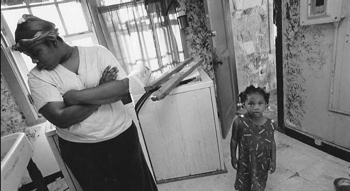
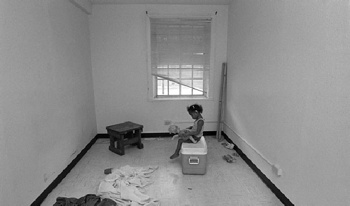
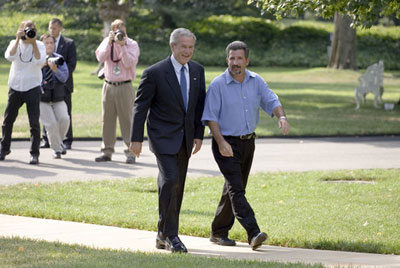
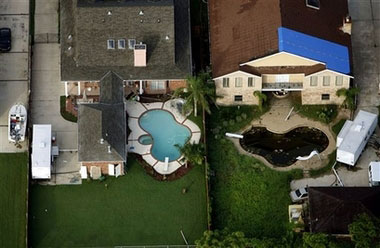
Reactions
Comments Powered by Disqus